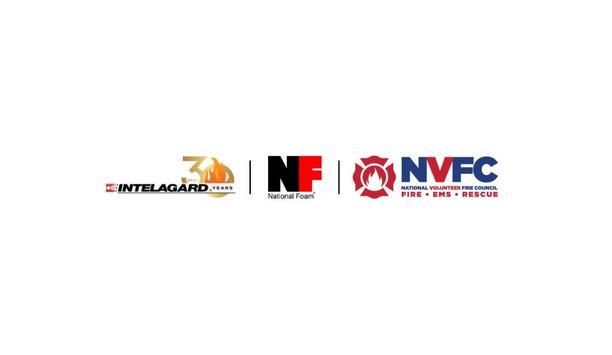Johnson Controls, the globally renowned company for smart, healthy and sustainable building solutions and architect of OpenBlue connected solutions, has announced the launch of Chemguard NFF 3x3 UL201 Foam Concentrate.
NFF technology
This new, patent-pending Non-Fluorinated Foam (NFF) technology provides fast and effective fire suppression on most Class B hydrocarbon and polar solvent fuel fires. With a longer drain time than most AR-AFFFs, this foam blanket also delivers excellent post-extinguishment burn-back resistance and vapor suppression.
Chemguard NFF 3x3 UL201 Concentrate passes the UL 162 synthetic foam concentrate protocol. It has also passed, under independent third-party witness, the UL 162 AR-AFFF test protocol for Type III hydrocarbon fuel at a 3-to-1 expansion ratio.
Chemguard NFF 3x3 UL201 Foam Concentrate
Chemguard NFF 3x3 UL201 Concentrate provides flexibility and ease of use for first response teams
This protocol’s more challenging foam application test rate of 0.04 gpm/ft2 (1.6 lpm/m2) is two-thirds that of the UL 162 synthetic, non-fluorinated foam protocol and for an AR-AFFF, this result would correspond to a minimum design application rate of 0.10 gpm/ft2 (4.1 lpm/m2).
Chemguard NFF 3x3 UL201 Concentrate provides flexibility and ease of use for first response teams, as it allows for consistent three percent proportioning for both hydrocarbon and polar solvent fires. This means there is no need to adjust proportioning for different Class B hazards.
Compatible with Standard response proportioning devices
With a 3-to-1 expansion ratio and viscosity similar to a 3x3 AR-AFFF, this foam concentrate is compatible with most standard response proportioning and discharge devices, reducing the need for significant hardware changes. The low expansion ratio provides greater throw distance for the foam, giving firefighters additional separation from the flames.
“We developed and tested the NFF Concentrate at the Johnson Controls Fire Technology Center, one of the most extensive fire research and testing facilities in the world,” said Craig Cook, Global Product Development Leader for foam products at Johnson Controls.
Craig Cook adds, “When tested on a hydrocarbon fuel fire at three percent concentration, the foam quickly gained 90 percent control and exceeded the requirements for extinguishment and burn-back time for a UL 162 AR-AFFF Type III listing.”
Non-fluorinated firefighting foam concentrate
Chemguard NFF 3x3 UL201 concentrate is defined as a non-fluorinated firefighting foam concentrate, produced in an equipment free from the use of PFAS chemistry. Since this product is free from any intentionally added PFAS chemistry and precautions have been taken to avoid PFAS contamination, it inherently complies with Directives (EU) 2017/1000 on PFOA and 2019/1021 (EU POPs directive) as a non-fluorinated product.
Along with other Johnson Controls’ fire protection products and solutions, this Chemguard NFF Concentrate helps protect people and property within industries, such as petroleum and chemical, where spills and limited scale hazards require a municipal and industrial response. It is also suitable for use in foam systems with Type II discharge devices.
















